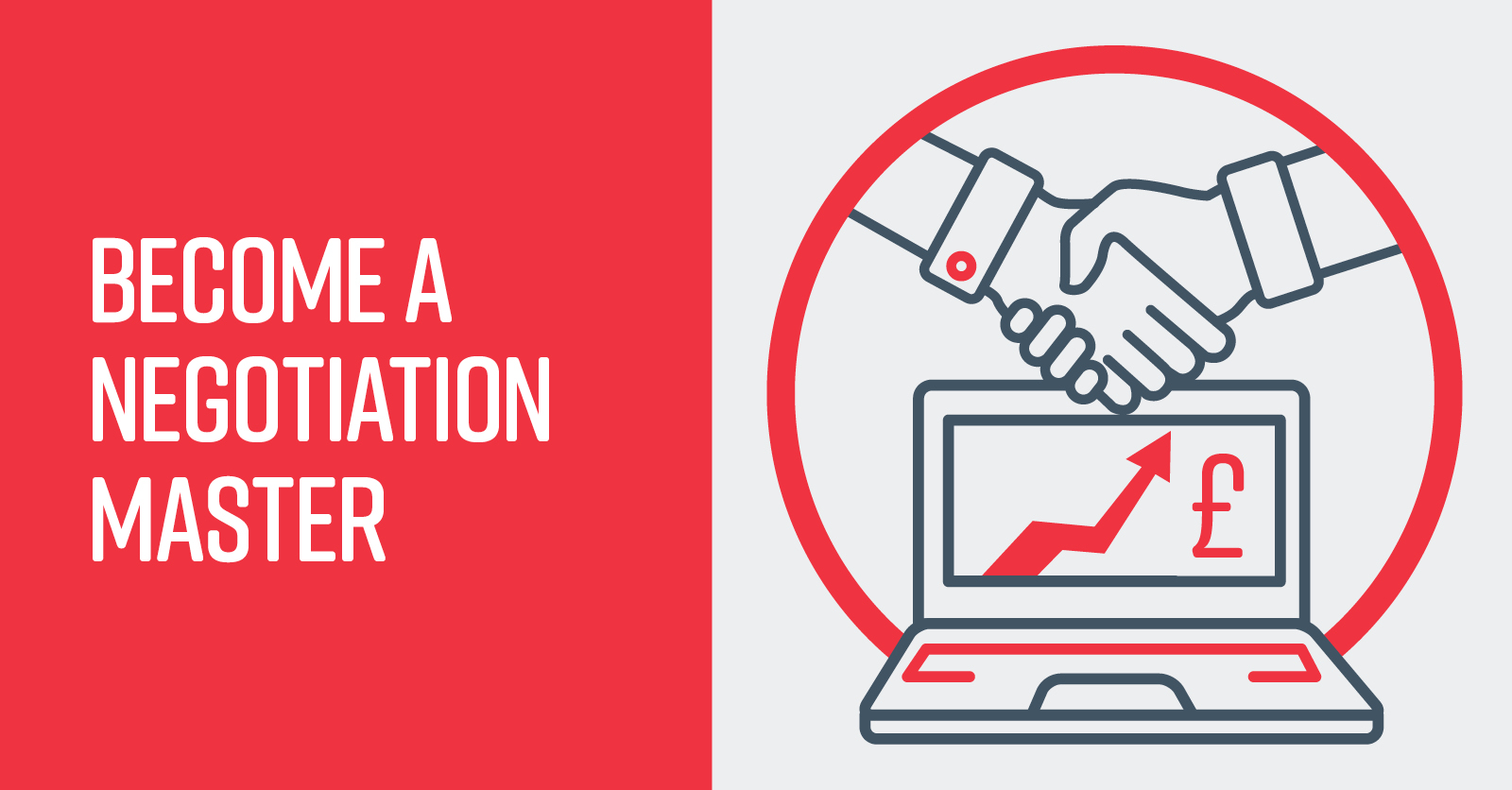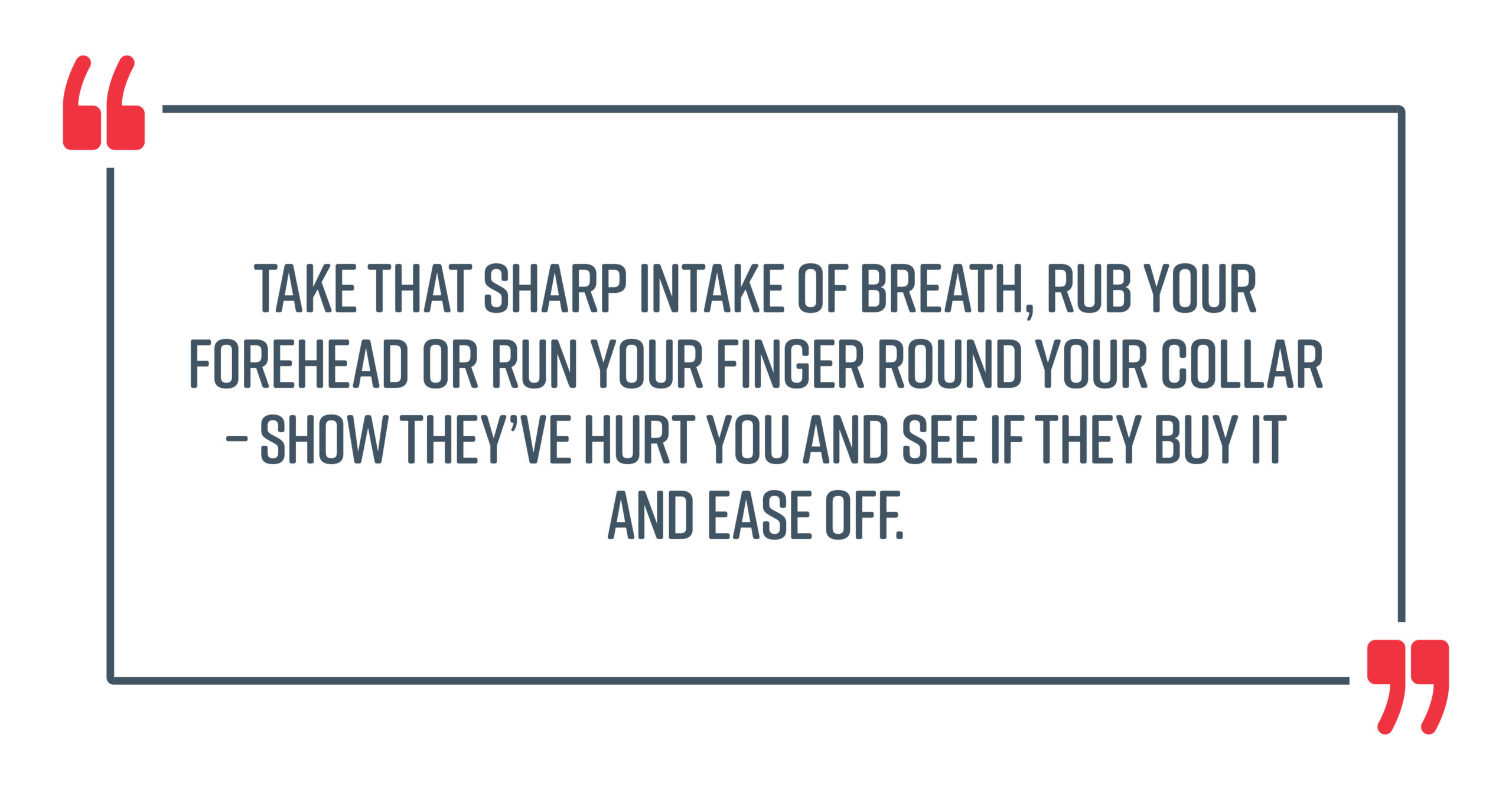Be yourself and play to your strengths, advises global negotiation master Jonathan O’Brien, and it is OK to bluff – provided you don’t get caught! Jonathan shares some tried and tested tactics guaranteed to make you a more accomplished negotiator.

Negotiation is a game – a performance if you like. You can be completely honest and open, or you can choose to bluff (bend the truth). You can be hard-nosed and stubborn or friendly and accommodating. There is no “one size fits all approach” – the right approach is the one that suits your personality. Nice or nasty is too simplistic, it is more; assertive or amenable – professionally pushy or disarmingly agreeable, whichever works for you.
That said, this doesn’t mean you can’t use a range of smart tactics to help you achieve your most desired outcome, you just need to adjust them to fit you. A tactic is just a scenario you plan, set up, then execute at the appropriate time.
But before we talk tactics, one golden rule is to gather as much information you can. If you are smart you will have done your research and planning before you get to the negotiation stage, but it doesn’t end there. You can get a wealth of information from the reactions of the other party during the negotiation itself.
The richest source of this type of information is in face-to-face settings, but video calls work too, provided you ensure all parties have their cameras on. Let’s explore some effective tactics.
Get off to a flying start
Take the power from the start by opening the meeting with a clear, concise statement that you have prepared and rehearsed in advance. Set out why you are there, why you are looking forward to working/continuing to work with the other party and what you want to achieve (without giving away any key information). If all parties don’t know each other, you can then introduce your team.
If they beat you to it don’t worry, wait until their opening statement finishes then deliver yours.
The Full Reveal
If amenable is your chosen approach, this disarming tactic could work well for you. Set out your most favourable terms in full at the outset. This tends to be used when you want to build or continue an important relationship with the other party, or when you are in a position with little or no power (especially if the other party know it). Explain why the relationship is important, remind them of the benefits of dealing with you, and then deliver your proposal. Emphasising that this is the best you can do and don’t enter any further discussion.
If it is not good enough then you wouldn’t have got a deal anyway. If they do take it, you will have built trust which you can leverage to get a better deal next time.
The Santa Claus
If the full reveal is not for you but you still want to take the amenable approach, try opening by making a gift. This could be an unexpected retrospective volume bonus from last year, a service improvement resulting from innovations you have already implemented, or another credible concession. This will create an unexpected and unconscious psychological debt they may feel obligated to repay.
Oh The Pain!
Pain and distress can manifest in facial expression, tone of voice, actual words used and body language. As humans we tend to have sympathy for (and want to help) those in pain or distress.
So play for sympathy.
Take that sharp intake of breath, rub your forehead or run your finger round your collar – show they’ve hurt you and see if they buy it and ease off.

On the other hand, if you see these signs in the other party it could well mean you have pushed close to their least desired outcome and it is time to get those final extra concessions and close.
The Columbo
Talking of those extra final concessions, once they have nodded and said that they are happy with the deal, tell them that is great, you are delighted and that is just one small thing.
Then, blazing your best smile, ask for a small additional concession. Psychologically, once there is a perceived agreement, we enter a state of unconscious relief which we don’t want to upset – so they are likely to agree.
Why Columbo? Remember the scruffy American detective who would turn to leave then turn back and say, “Oh there’s just one more thing.” No? Maybe you’re too young!
The KGB
If you sway more towards the assertive approach, try getting an improved outcome by informing the other party that “something has changed”. This can be after a break, or time out in the meeting (or even post negotiation prior to signing the contract if building trust isn’t important). Circumstances change sufficiently to require further discussion and the deal needs to be re-negotiated.
This tactic can be used to recover a mistake, if you can’t meet the agreed deal, if new information comes to light, or if you get a better offer from an alternative source. To ensure you have licence to do this, be certain to point out that “nothing is agreed until everything is agreed” at the outset.
Salami Slicing
The saying goes “if you don’t ask you don’t get” and this is certainly true in negotiation – so ask. Ask for small concessions and if you don’t get them ask again. The worst that can happen is the other party says no. Having scoped your concession plan you will know what you are willing to trade for any given concession from the other party.
So try every angle and keep on asking…. and, for the cherry on the top – end with a Columbo!
Something for Something
Whenever you are asked for a concession always ensure you get something in return.

“OK I can agree to that provided that you will…”
“In order to agree to that I will need…”
“I am sorry I cannot agree to that (long pause) unless, of course, you could…”
“The only way we could even consider a concession of that value would be if you…”
Time
Time constraints can work for you especially when markets are volatile. To accelerate a decision or to protect your margin ensure your prices are time limited – “we can only hold this deal until…”
If the time tactic is used against you, get behind the time constraint. Ask them to detail the reasons why time is limited and ask for clarification if anything is suspect.
Sometimes a delay in responding can be helpful. By not returning emails or calls for a period of time you can build some positive pressure.
The Higher Authority
If you don’t want to agree to a requested concession, defer to seeking approval from a higher authority – “I will need our CFO to OK that”. Then you can come back with a counteroffer without taking responsibility. It is also possible to use this as a break or a time out to pause the meeting, allowing a follow-up. You can even use the higher authority as the “Bad Cop” in any follow-up meeting.
If this tactic is used against you, smoke out a bluff by asking why the higher authority is not in this meeting and suggest a time out while arrangements are made for them to join remotely. Or ask for their phone number so you can give them a call – you should be prepared to call them if it is not a bluff.
Split the Difference
This is a blunt instrument with no finesse and is one to avoid for two reasons:
Firstly, it can undermine all your previous arguments.
Secondly, you can reveal too much about your position.
Cherry Picking
After the first negotiation go back with an inflated specification, e.g. increased volume or additional scope, together with your expectations of improved terms.
When the improved terms are agreed, use the Somethings Changed tactic and go back to the original specification and start again with the improved terms.
Now be prepared to Salami Slice your way to a new deal.
The Decoy
Find a credible but unassailable obstacle that stops any agreement being reached. Allow yourself to be persuaded to park that issue on the assumption that a solution can be found and continue the negotiation to a satisfactory outcome.
Now kill the happy buzz by reminding the other party that there is still the showstopper that needs to be addressed.
Look disappointed. Heave a heavy sigh and let the silence grow until it becomes uncomfortable. Half of the time the other party will offer a concession to break the tension.
If they don’t, suggest a way that the problem could be solved by ensuring you detail the costs to you that would be involved. Then ask what they can do to offset this and negotiate further concessions.
Not only will you get a better outcome, but you will be a hero for saving the deal!

My top tips
In a complex negotiation ensure you keep an accurate track of every negotiable element that is agreed – XL is your friend here, as is having a ‘Mr Data’ or ‘Ms Data’ on your team whose job it is to track everything. This avoids falling victim to the ‘mistaken’ summary from the other party who ‘misremember’ a key element or two.
You often have more power than you think. Typically, power comes from having alternatives – the more alternatives you find the more power you have.
And Finally…
Everyone can negotiate. We do it every day with our family, with friends, with colleagues.
The trick is to get the best outcome.
Take another look at these tactics and think about how they have been used unconsciously on you!
You’ll be ready for them next time – happy negotiating!
Written by Jonathan O’Brien, leading negotiation expert and CEO of Red Sheet Negotiation and Positive Purchasing Ltd. Jonathan works with global blue-chip organizations to help transform their negotiation capability. He also helped pioneer the Red Sheet® negotiation methodology.

